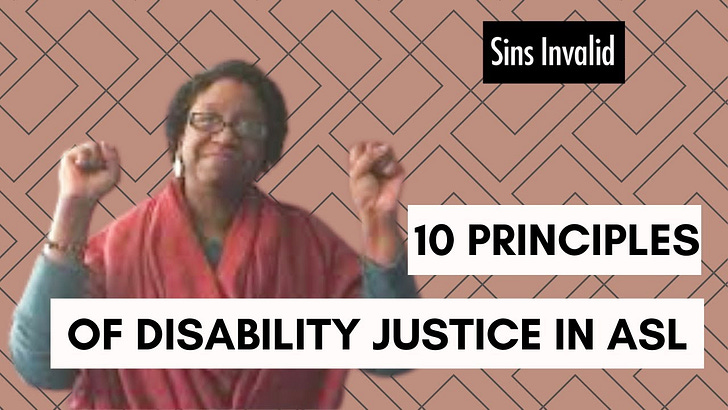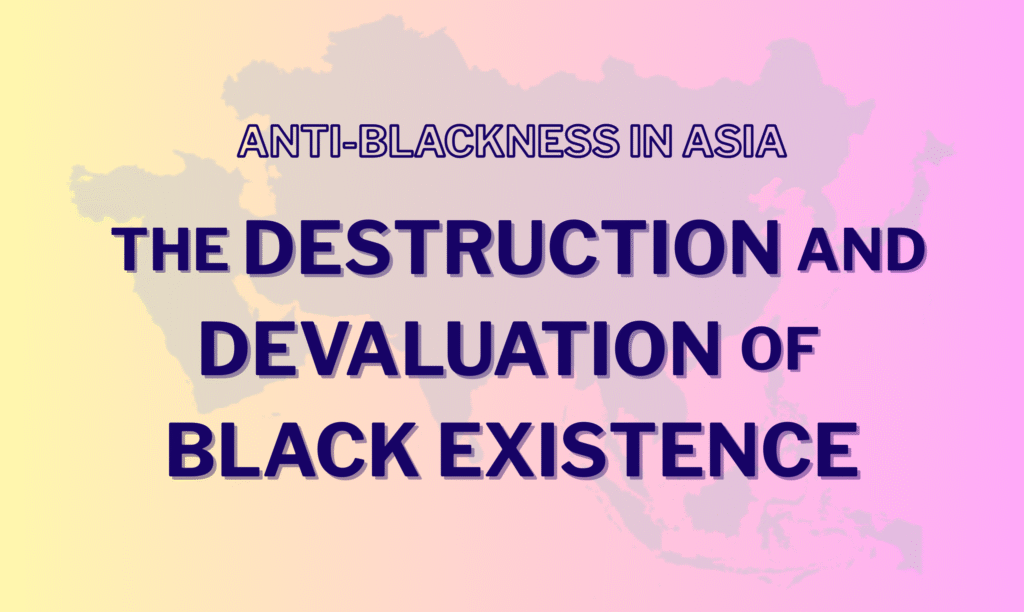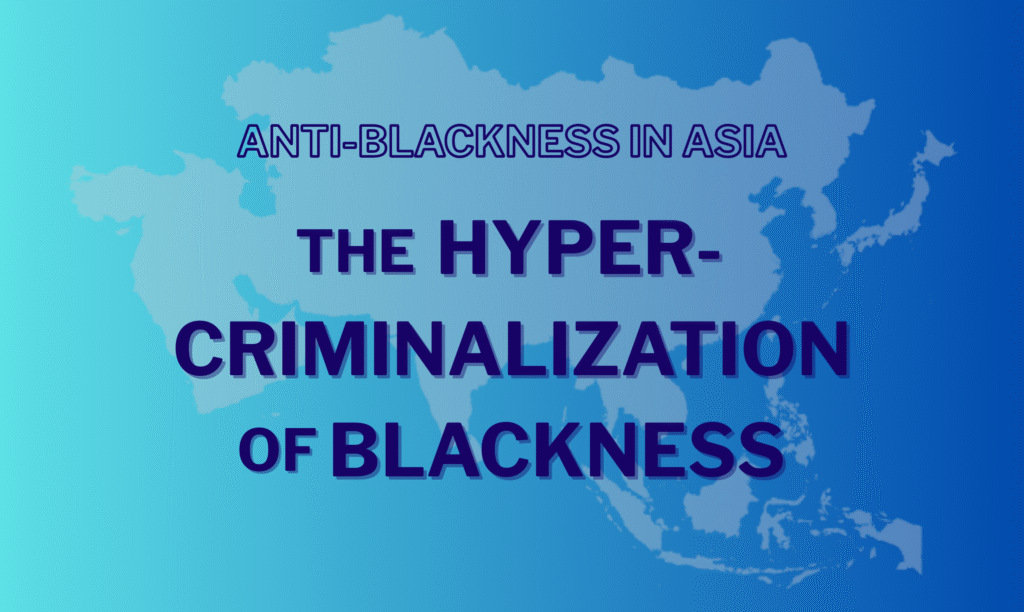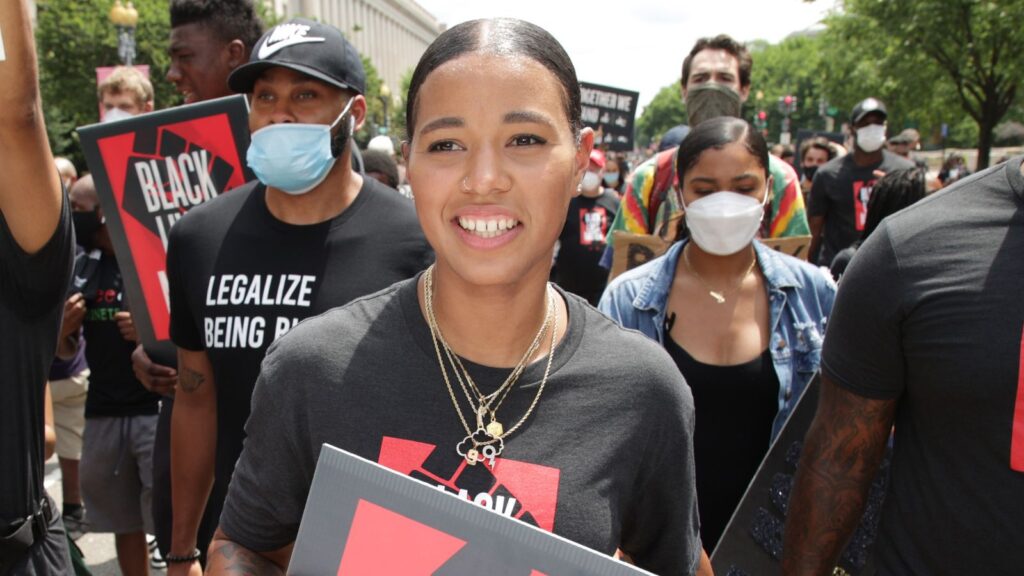Part I in my series on anti-Blackness in Asia
When we talk about anti-Blackness, we tend to assume that everyone already agrees on what Blackness itself is. But I want to start a step further back in the conversation, because the conception of “Blackness” is, in itself, a very mutable political and social category that does not have a fixed definition.
Blackness is rooted neither in biology nor phenotype (though colonial powers have tried to use racist “science” to pretend that it is, in order to justify their inhumane treatment of Black people), nor in culture nor ethnicity (though culture and ethnicity can be important parts of each person’s Blackness). The definition of who is considered Black can change through history or geography, just as who is considered white can – and who is considered Asian, but I’ll get into that more when we talk about Asian diaspora.
So what does this mean for this discussion? I’m going to share a number of approaches to identifying Blackness and anti-Blackness in Asia that have informed my thinking. As such, today’s post is pretty theory-heavy. If theory’s not your thing, totally get it, and hang tight because future pieces in this series will be less theoretical… but I would still encourage you to read this if you can, because I think it’s a useful framing for how we approach this topic.
Race and Blackness as concepts have developed from ancient and pre-modern ideas to now. Cultural anthropologist Yasuko Takezawa developed a framework specifically to encourage conceptions of race in the Global South, and in Dr. Takezawa’s work, she applies them to Asian contexts. Dr. Takezawa identifies three dimensions of race globally, which all can intersect with each other:
- “race in the lower case”, which refers to socially differentiated groups that are defined by heredity – that is, people who are born into a group and cannot change that – which can also apply to a lot of ancient and pre-modern social structures in Asia that are now considered distinct from race, like caste[1]
- “Race in the upper case”, which is the modern concept of racial classification – ostensibly by phenotype and skin color, though that is very unstable – that developed originally in the Global North but has been disseminated globally
- “Race as Resistance”, where minority populations align themselves racially for solidarity and empowerment
Anthropologist Marvin D. Sterling, whose work also focuses on Asia, uses Dr. Takezawa’s framework and identifies three discourses of Blackness that together contribute to global conceptions of Blackness:
These three conceptions of Blackness are not wedded to distinct chronological periods; all of them exist today and interact with each other.
There’s complexity and tension tied up with the fact that the way Black folks are seen by others contributes to their Blackness. African diaspora studies scholar Michelle Stephens refers to the work of Frantz Fanon, political philosopher, psychiatrist, and Marxist:
“To the degree that phenotype or color-consciousness matters in how Black subjects across the diaspora perceive their racial identity, it matters mainly because someone else is looking. What Fanon knew intimately about the colonial world, and what African Americans live everyday as a national minority, is the reality that race is itself a shorthand for racial relations between subjects who perceive themselves as different from each other. Hence Fanon’s observation that “not only must the Black man be Black; he must be Black in relation to the white man…The Black man has no ontological resistance in the eyes of the white man”. This intercultural and interpersonal dimension of Black identity, what Hortense Spillers has also termed an interior intersubjectivity, is especially important to take into consideration now as conversations open up in new directions concerning the status and utility of race as a concept…”
Cultural anthropologist Uri Dorchin reflects on this counter-balance of Blackness and whiteness when naming that Ethiopian Jewish immigrants and other African immigrants to Israel often did not see themselves as Black until they were in settings in which Black folks were in the minority, where there are political and social reasons to identify themselves as such; this dynamic is evident in other places where Black people find themselves in new frameworks of racialization after immigrating.
There are also numerous communities within Asia that have, in the past, been identified alongside Blackness – for example, ancient and pre-modern Chinese texts refer to Khmer people as Black. Critical race studies scholar Hazel McFerson talks about colonial attempts to “negrify” Filipino people that we would now think of as non-Black. Dr. Dorchin also notes that Jewish people in European history were considered to be of color regardless of their actual skin color, and that Mizrahi Jewish people have also claimed political forms of Blackness. Countless other examples abound. However, I’m drawing from a contemporary understanding of global Blackness that would not include those communities within Blackness, because they have been racialized in other ways in contemporary Asia. I will, however, talk in my next post about dynamics that have become intertwined with Blackness in Asia, including casteism, colorism, xenophobia, and more.
To all this I want to add ideas of Blackness related to Black Indigenous Asian communities. There are countless Indigenous communities[2] in Asia, primarily in Southeast Asia, who are considered Black, largely because they were misidentified as Afro-descendant by European colonists[3]. I am interested in the ways that Black Indigenous communities were and are racialized as Black by colonists and settlers, how that impacts them, and how they perceive themselves in the context of Blackness.
I’ll give more concrete examples of Black Indigenous Asian association and self-identification with Blackness in future sections, but here I want to refer to the work of Afro-Indigenous scholar Kaiya Aboagye (who is Ghanaian, Aboriginal, and Zenadth Kesian, the latter known colonially as Torres Strait Islander), who uses Bla(c)kness as a way to decolonize settler colonialist constructions of Blackness. In Sahul (the paleo-continent that became Australia, Tasmania, New Guinea, and the Aru Islands), “Blakness” is used to refer to Aboriginal, Zenadth Kesian, Australian South Sea Islander, Melanesian, and other Pacific Indigenous identities that were colonially designated Black despite having no recent connection to Africa. Aboagye puts forth that Indigenizing the concept of Blackness is necessary to destroy these colonial legacies, encouraging Indigenous identification with Blackness while still dealing with issues of racialized conflict within Blackness:
“The intertwined concepts of Blackness and Indigeneity as they are understood by Black Indigenous people represent not just a racialized alliance or affiliation between people to be critically compared. It represents something much more profound and deep. It represents evidence of a rich mosaic, of a nuanced, complex, and esoteric trans-Indigenous paradigm, like many of our Indigenous knowledge constructs (found in song, dance, art, parable poetry and proverbs). Blackness as cultural conceptual notion is reclaimed and reimagined here as a voyage ship traveling constellations that stretch beyond the limitations of Western knowing or categorizing. It transcends colonial constructs of time and space, ethnicity and race, instead moving Indigenous peoples from Africa to Oceania on a journey through the process of ancestral reclamation and healing from colonial epistemicide, its subsequent colonial conditioning and manifest intergenerational trauma.”
Given that the “Black” racialization of Blak folks in Sahul came from the same European colonial forces that colonized parts of Asia, Aboagye’s understanding has informed how I think about Black Indigenous Asian communities as well.
Who, then, are we referring to when we talk about Black communities in Asia? This, to me, is an important question, because even though much of the anti-Blackness in Asia is generalized and impacts all Black folks, there are some different dimensions of anti-Blackness that can impact each Black community distinctly. Additionally, naming these communities illustrates the diversity of Black experience in Asia, and also combats the notion that all Black Asians are newer migrants to Asia, when in fact there have been Black Asians for millennia.
So considering all the ideas of Blackness together, I’m looking at the following communities in Asia:
Anti-Blackness, then, is not simply an individual’s feelings or prejudice about Black people, but a form of global systemic oppression that is mutually reinforcing with every other type of oppression. Scholars Janvieve Williams Comrie, Antoinette M. Landor, Kwym Townsend Riley, and Jason D. Williamson write:
“Anti-Blackness is defined as the beliefs, attitudes, actions, practices, and behaviors of individuals and institutions that devalue, minimize, and marginalize the full participation of Black people —visibly (or perceived to be) of African descent. It is the systematic denial of Black humanity and dignity, which makes Black people effectively ineligible for full citizenship. The Anti-Blackness paradigm positions Blackness as inherently problematic, rather than recognizing the long, rich, and diverse history of Black people throughout the African diaspora, and acknowledging that Black communities across…the world have been severely disadvantaged as a result of historical and contemporary systemic racism.”
I also want to draw on the Afro-Pessimist tradition here, which emphasizes that the impacts of colonialism and the historical processes of enslavement are crucial to our understanding of Blackness, and that those processes still impact Black folks worldwide. Writer, dramatist, filmmaker, and critic Frank B. Wilderson III writes:
“Afro-Pessimism is premised on an iconoclastic claim: that Blackness is coterminous with Slaveness. Blackness is social death, which is to say that there was never a prior meta-moment of plenitude, never a moment of equilibrium, never a moment of social life. Blackness, as a paradigmatic position (rather than as an ensemble of identities, cultural practices, or anthropological accoutrement), cannot be disimbricated from slavery.”
I bring up Afro-Pessimism in contrast to an idea that I hear fairly often: that because the Atlantic slave trade and the vast majority of chattel slavery was driven by the United States, and because those processes of enslavement were uniquely violent compared to the types of slavery that existed in other parts of the world, discussing anti-Blackness in the context of slavery is not applicable worldwide. I believe this is a reductive view because it does not account for how globalized and interconnected our world was during the Atlantic slave trade, and how we cannot so easily extricate its impacts on Asia, particularly when the Europeans and Americans who were formulating racist ideas of Blackness were colonizing parts of Asia at the same time.
There are many more valid critiques of Afro-Pessimism; one that I continue to sit with is by theorist g (disrupthehuman on twitter), whose formulation of Black Trans*feminist Nihilism pushes back on both Afro-Pessimism and Black feminist traditions to point out where they rely on cissexist and intersexist understandings of what it means to be Black:
“[Black feminism’s] divergence from (white) feminism being grounded in questioning the latter’s utility with regards to Black gender carries with it the presumption that the Black trans* gender question is resolved. This theoretical void that was not recognized as such was attempted to be filled by Queer Theory, which has now been met with Black Queer Theory. At every stage, the unspoken ‘development’ occurs through a critique of various extensions and additives of ‘all the women are white, all the Blacks are men’. Black feminism and Black queer theory have employed intersectionality to show that it’s not enough to critique that maxim through pointing to Black Women, but one must also point to Black Women who are poor, not straight, fat, etc. However Black feminism operates upon the collapsing of the overrepresentation of ‘Black males’ and the overrepresentation of cis Black men. Therefore, if Black feminism emerges from a critique of the maxim ‘all the women are white, all the Blacks are men,’ then Black trans*feminism emerges from a critique of the maxim ‘all the women are white, all the Blacks are men, all the Black Women are cis.’”
Black trans*feminist nihilism relies on the idea of transmisogynoir-as-fulcrum – that is, seeing the unique oppression faced by Black trans women (which writer and photographer Trudy conceptualizes as transmisogynoir, building off of communications scholar Moya Bailey’s conception of misogynoir) as foundational to anti-Blackness, and that it cannot be dismantled without fundamental reconceptualizations of Blackness and Black gender that do not feed into bioessentialism and intersexism (oppressions which themselves intersect prominently with anti-Blackness).
None of this is to say that anti-Blackness manifests the same way across the world. We still need to be investigating how anti-Blackness presents in different contexts – that is, in fact, the point of this series! Afro-Pessimist scholars Patrice Douglass, Selamawit D. Terrefe, and Frank B. Wilderson III set out an initial framework for thinking about this:
“Humanists and sociologists might argue that what it means to be Black in the United States, where the one-drop rule is in effect, is completely different than what it means to be Black in most of Latin America, where a range of hues are named and experience uneven development as a consequence of that naming. Afro-pessimists would not deny the facticity of such claims but would relegate the distinction between a North American and Latin American orientation toward Blackness as being important but inessential to a paradigmatic analysis. What is essential is neither the interpersonal nor institutional orientation toward Blackness, but the fact that Blackness is the essence of that which orients.
Put differently, the coherence of reality (be it institutional or interpersonal coherence) is secured by anxiety over both the idea and the presence of Blacks. The Black, to paraphrase Frantz Fanon[…] is a stimulus to anxiety, and it is the anxiety of antagonism represented and embodied by Blackness that creates the condition of possibility for both the rigid one-drop rule and the catholic plethora of shades that are named in countries like Cuba and Brazil. Afro-pessimism implores us to think Blackness at a level of abstraction that scholars heretofore have thought the worker (Marxism), the woman (nonBlack feminism), and the native (postcolonial studies) and to think the human as a fetishized form rather than as a universal given.”
And even if you disagree with the Afro-Pessimistic global orientation, anti-Blackness is still worth talking about globally, if only because the impact of labeling anti-Blackness as “U.S.-centric” idea should give us pause: it is often not used to broaden those definitions of anti-Blackness outside the United States, but to shut up Black American speakers talking about global anti-Blackness. As cultural ethnographer Rayya El Zein notes (in the context of anti-Blackness in Southwest Asia and North Africa, but the principle applies elsewhere too):
“Important as it is to provincialize US empire, and with it, patterns of racialization born of that context, accusations of US-centrism—since they frequently silence an often Black speaker—have largely suppressed anti-racist critiques in MENA/SWANA contexts. That is, accusations of US-centrism have largely not encouraged the proliferation of other work on race, slavery, colorism, and empire that would facilitate a non-US-centric conversation about and struggle against anti-Black racism in MENA/SWANA contexts. Thanks to the efforts of Black activists and scholars, this does appear to be changing, albeit slowly.”
Anti-Blackness is also not only a modern (post-1500 CE) phenomenon. While ancient and pre-modern anti-Blackness takes different forms than modern anti-Blackness, that does not mean anti-Blackness did not exist in those periods, nor that it was not harmful. Critical Muslim studies scholar Iskander Abbasi situates anti-Blackness in the pre-modern Muslim world as having key similarities in ideology to modern anti-Blackness, but lacking the same structures of power:
“However, a key difference is that this pre-modern form of anti-Black prejudice formed in regions without the existence of totalizing modern nation-states and their panoptic governmentality. Simply put, power (and race) worked differently under pre-modern Islamicate empires, and was nowhere near as penetrating in the everyday life of the citizen-subject or the relatively self-autonomous communities who remained outside the reach of centralized non-capitalist polities. Thus, we should hesitate to call anti-Black racism a primary organizing principle in these pre-modern Islamicate societies…
…It seems anti-Black racism acted as a secondary or tertiary social organizing principle in various historical Islamicate societies, and as a relatively ‘weaker’ sociological form of anti-Blackness. By ‘weaker’ I do not mean to suggest it less violent, or apologetically reduce it to something morally ‘better’ or ‘nicer’, but weaker in the sociological sense that it was not a form of anti-Blackness that necessarily penetrated the everyday lives and world-systems which existed in the pre-modern Muslim world, nor was it able to manifest in an immanent totalizing form.”
So one thing that I’ll be tracing throughout these posts is the way that ancient and pre-modern anti-Blackness a) interacted with other contemporaneous systems of oppression, and b) have now become intertwined with modern anti-Blackness, which is sociologically stronger.
How does anti-Blackness manifest globally? Janvieve Williams Comrie et al have identified several core components of anti-Blackness worldwide, which work together and overlap. I draw from their work here but slightly reframe the core components as the destruction and devaluation of Black existence, the hyper-criminalization of Blackness, Black (un)health, social conceptions of Black value, and Black resistance and the fight for liberation. In subsequent sections I will apply these ideas to examples from Asia, but first, let’s explore them a little generally.
The destruction and evaluation of Black existence
Anti-Black structures depend on the idea that Black people are less than human in order to justify their exploitation and destruction. The enslavement of Black people exemplifies this, of course, which saw its most totalizing form in the history of the Atlantic slave trade and plantation-based chattel slavery in the United States. But the systematic dehumanization of Black people is not solely American.
Black enslavement went beyond the Global North – both in the sense that Black people were enslaved in many parts of the world (some in different forms of slavery than in the United States), but also in that European and American slavery was the underpinning of the global system of capitalism that we have today, a system that still relies on anti-Blackness. Geographers Adam Bledsoe and Willie Jamaal Wright draw from Afro-Pessimism to show that the never-ending expansion of global capital – the need to not just produce enough for humans to subsist, but to keep accumulating profit – requires the constant theft of Black spaces and land, and the constant exploitation of Black labor.
However, the dehumanization of Black people goes beyond simply the justification for their exploitation: it exists in and of itself, and causes non-Black people to often work against their own economic, political, or social interests just to perpetuate anti-Blackness. This is why many other analyses of injustice that don’t center anti-Blackness are flawed: to have a Marxist analysis that is not a Black Marxist analysis will fail to capture how white workers will eschew broader solidarity with Black workers just to push them down, or why feminism that is not Black feminism won’t explain why white women will ally with men against Black women for the same purpose.
This dehumanization and “a-spatiality” of Black existence (that is, the fact that Black people have no places that are seen as belonging to them) can be seen in conceptions of African countries as grassland with animals and few people, or colonialist ideas about “civilization” that treat Black people as “primitive”, or racist comparisons of Black people to animals. Which leads to…
The hyper-criminalization of Blackness
Even as Black people are exploited for labor and profit, they are also declared threatening and “criminal”, which then opens up the Black body as a site for both “preventive” and “retributive” violence in the name of public safety. (Even when that violence is manifested through non-state actors, the institutional nature of anti-Blackness can reward those non-state actors as “vigilantes” or as acting in “self-defense”.) Black people are perceived as hyper-sexual, which is also framed as dangerous, even though Black gender minorities are the ones who face disproportionate sexual violence. Black criminality tropes are the reason why Black children never get to be young, because they are treated like adults in terms of how “threatening” they are perceived to be.
Analysis of Black criminalization often focuses predominantly on the experiences of Black cis men, but all Black people are subject to criminalization, and indeed, Black trans women are often seen as the most threatening because of transmisogynoiristic lies that they are “male” or were “socialized as male”.
Sometimes the exploitation of Black people’s labor is also put forward as a “corrective” to criminality – the use of prison labor, for instance, which in the United States is a legal form of slavery remaining today. But again, it’s not just the United States that is guilty of this. The systems of civil and common law that many Asian countries draw from were formed around European colonialism and the Atlantic slave trade, so even their concepts of criminality had global influence.
The narrative of Black criminality is one that other racial minorities are defined by – we’ll see this in later posts about Asian diasporic communities, especially with the “model minority myth”, which seeks to frame Asians in opposition to Black folks – and its impacts do not only include criminal legal systems in themselves, but also the constant surveillance of Black bodies, and the perpetual specter of violence towards Black people, which is generally seen as justified by the state.
Black (un)health
Black people do not just disproportionately suffer health problems: they are excluded from health itself. Through systemic discrimination like poverty, environmental injustices that expose Black people to toxic pollution and waste, and lack of access to healthy food, Black people are denied the basic elements that contribute to health. Once ill or disabled, they suffer medical racism from healthcare systems formed around Western science, which dismiss Black pain and lead to subpar care, particularly for Black women and gender minorities. Experiencing racism in and of itself causes chronic stress and weathering of Black bodies, along with intergenerational trauma from histories of colonialism, enslavement, and inequality.
Social conceptions of Black value
Many people struggle with understanding how anti-Blackness manifests when it appears to have numerous internal contradictions. Why, for example, are the physical characteristics associated with Blackness considered the least desirable when it comes to standards of beauty and attractiveness worldwide, but Black people are still fetishized and oversexualized by non-Black people? And why is it that Black cultural production – in music, literature, art, language, sports, entertainment, and so much more – appears to be valued, when Black people still are not?
These are not actually contradictions: the systemic dehumanization of Black people means that Blackness and Black labor can be separated from the humanity of Black people. Acknowledging Blackness as beautiful and attractive is to give it power, so Black people are denied those designations, but they can still be objectified. And Black culture is not seen as having social value when it is attached to actual Black people, but it is valued when it is separated from Black people, because it is then divorced from the “threat” that comes along with actual Black personhood.
As a result, Blackness and Black people become themselves commodified. And individual Black creators and celebrities may be valued when what they create becomes popular, but their social value is conditional: they are at constant risk of losing access to the very thing they have created, just by existing as Black people. Those elements of Black culture and Blackness are then neutralized of any political or radical association (or, sometimes, applied to political struggles that do not align with Black liberation), and repackaged for non-Black people to steal and profit from.
This is how so many Black art forms or styles that originated as forms of Black resistance or survival – types of music like gospel, jazz, reggae, rap, and hip-hop, or languages like African American Vernacular English (AAVE), or queer ballroom and drag cultures, or Black fashion, or protective styles for Black hair – have been successfully de-fanged and appropriated. Black people’s value is seen as their ability to produce or be a commodity that provides just enough difference to be “edgy” when non-Black people appropriate it, even though it’s deemed threatening when it comes from Black people.
Black resistance and the fight for Black liberation
Wherever anti-Blackness exists, so does the fight for Black liberation. This is not a natural or inevitable phenomenon, but one borne out centuries of deliberate rebellion by Black communities. From resistance by enslaved people, to Black Indigenous people fighting for the rights to their land and self-determination, to Black immigrants making new lives and communities for themselves, to Black people joining worldwide protests, to the quieter survival of Black people every day – anti-Blackness does not exist without a counter-movement against it.
As such, we non-Black people have to understand the histories both of anti-Black oppression and of rebellion against it by Black folks and allies – and not just understand them, but use our understanding to uplift Black voices, fight for concrete reparations, and tear down the structures that rely on anti-Blackness.
[1] Dr. Takezawa’s framework helps us think too about how other elements of race can be mutually reinforcing with Blackness; caste and colorism are good examples that I’ll discuss in a future section, because to be caste-oppressed or dark-skinned in Asia is not necessarily to be Black, but there are both parallels and intersections between those oppressions and anti-Blackness.
[2] I want to be clear here that Black people whose ancestors were enslaved and forcibly transported out of their homelands are not settlers or immigrants, but displaced Indigenous people. I also want to acknowledge that Indigeneity and who is considered Indigenous are also fundamentally shaped by colonialism: Indigeneity is a political relationship to land that is based on colonists’ violent invasion and theft of that land, and determinations of Indigeneity are often aimed at weakening Indigenous political power and self-determination – for instance, the system of blood quantum in the United States. But for the purpose of clarity in my posts, I am referring to Black folks as Indigenous if they are from communities who are, contemporaneously, considered indigenous to Asia.
[3] Today, many scholars are still very preoccupied with the genetic origins of these communities, whether they are related to each other, and whether they can be traced back to African ancestry. I am wholly uninterested in this approach to their Blackness – in fact, I view the academic obsession with tracing such genetic links as a contemporary version of the colonialist racial science which still serves to treat Black Indigenous bodies as only relevant for their past, not their present, and insert them into racial classifications that are supposedly fixed and based in biology, despite race being a social, cultural, and political category that is, by definition, mutable.







